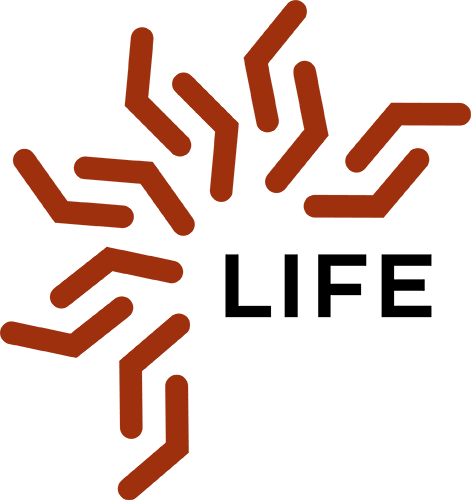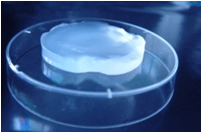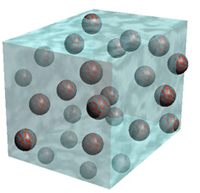 LIFE
LIFE
Polymer materials at the interface with life sciences
The scientific organisation of the centre is based on, from the molecule to the object/device, vertically combining the skills derived from macromolecular and oligomer chemistry, biofunctionalisation, formulation, process design, multi-scale characterisation and the evaluation of relevant properties for targeted applications in life sciences. The division’s activity is divided into three areas:
Bio-inspired materials for organic environments
Materials based on natural polymers are developed mainly from polysaccharides for applications in the regenerative medicine of soft tissues (skin, heart, blood vessels, etc.), for drug delivery or as vaccines adjuvants. Our research focuses on:
-
Extraction, purification and characterisation of polysaccharides, and the production of perfectly characterised oligosaccharides
-
 The physical chemistry of aqueous solutions of poly(oligo)mers or their combinations
The physical chemistry of aqueous solutions of poly(oligo)mers or their combinations -
The design and development of polysaccharide materials and the characterisation of their structural, mechanical and biological properties (in collaboration) These polysaccharide materials are obtained in various physical forms: liquids (aqueous solutions), hydrogels, solid forms (films and fibres), and nano or micro-objects of controlled size, interfacial properties and morphology
-
Preparation of surfaces functionalised by poly- or oligosaccharides for tissue engineering, but also to exploit the specific interactions of certain polysaccharides with microorganisms (e.g. antibiotic alternatives).
This theme has led us to develop close relationships with the “Cell-Environment Interactions” group of the Lyon Veterinary School (Vétagro Sup, Marcy l’Etoile) for the tissue engineering of the locomotor apparatus, development of tools for cell culture and cryopreservation, and development of nano-objects for the fight against cancer.
Colloids for health
The colloids developed in this area aim to protect and deliver integrated anti-tumour or anti-infective agents in a controlled manner. Their purpose is also to remove technological barriers in imaging by controlling their size, content and surface functionality. Our research is therefore linked to:
- Design and development of innovative colloids based mainly on polymers and/or lipids, incorporating or not various active ingredients
- Surface functionalisation of these colloids by polymers, lipid membranes, biological molecules or markers to provide a targeting property to these colloids, improve their stability, modulate their capacity to deliver active substances and monitor their fate during their interactions with biological environments
 Incorporation of these colloids into hydrogel matrices to delay the release of active principles
Incorporation of these colloids into hydrogel matrices to delay the release of active principles- In-depth characterisation of the colloids obtained, the delivery of the active ingredients from these colloids, according to various physical-chemical parameters and stimuli
- Therapeutic and biological evaluation of colloids designed by performing various in vitro/in vivo tests, as well as an understanding of the fundamental mechanisms managing their interactions with surrounding environments (in collaboration)
Polymers for fluorescence bio-imaging
Fluorescent probes based on biocompatible polymers are synthesised by combining multifunctional polymers with chromophores with special optical properties, for optical microscopy applications at different scales (virus imaging, cells, small animal) or theranostic (including anti-cancer therapy by dynamic phototherapy). Our research focuses on both polymer chemistry, and optical and biological disciplinary interfaces:
- Synthesis of controlled structural polymers, in particular, by the RAFT process (statistical and/or block copolymers, organic or hybrid nanoparticles)
- Functionalisation of polymer chains (or nanoparticles) by chromophores of interest (visible and near-infrared range, bi-photon, photosensitizers, photoswitchable fluorophores for super-resolution microscopy)
- Biofunctionalisation of polymers by biological entities of specific anchoring/targeting according to the intended application (biotin, lipid, peptide, protein, oligonucleotide)
- Physical-chemical and photophysical characterisation of water-soluble polymer conjugates and elaborate nano-objects
- Biological evaluation in cellulo/in vivo as imaging/theranostic probes for various biological applications, particularly in the fields of infectious diseases, immunology and oncology (in collaboration)
Headed by: A. FAVIER / L. DAVID / C. LADAVIÈRE